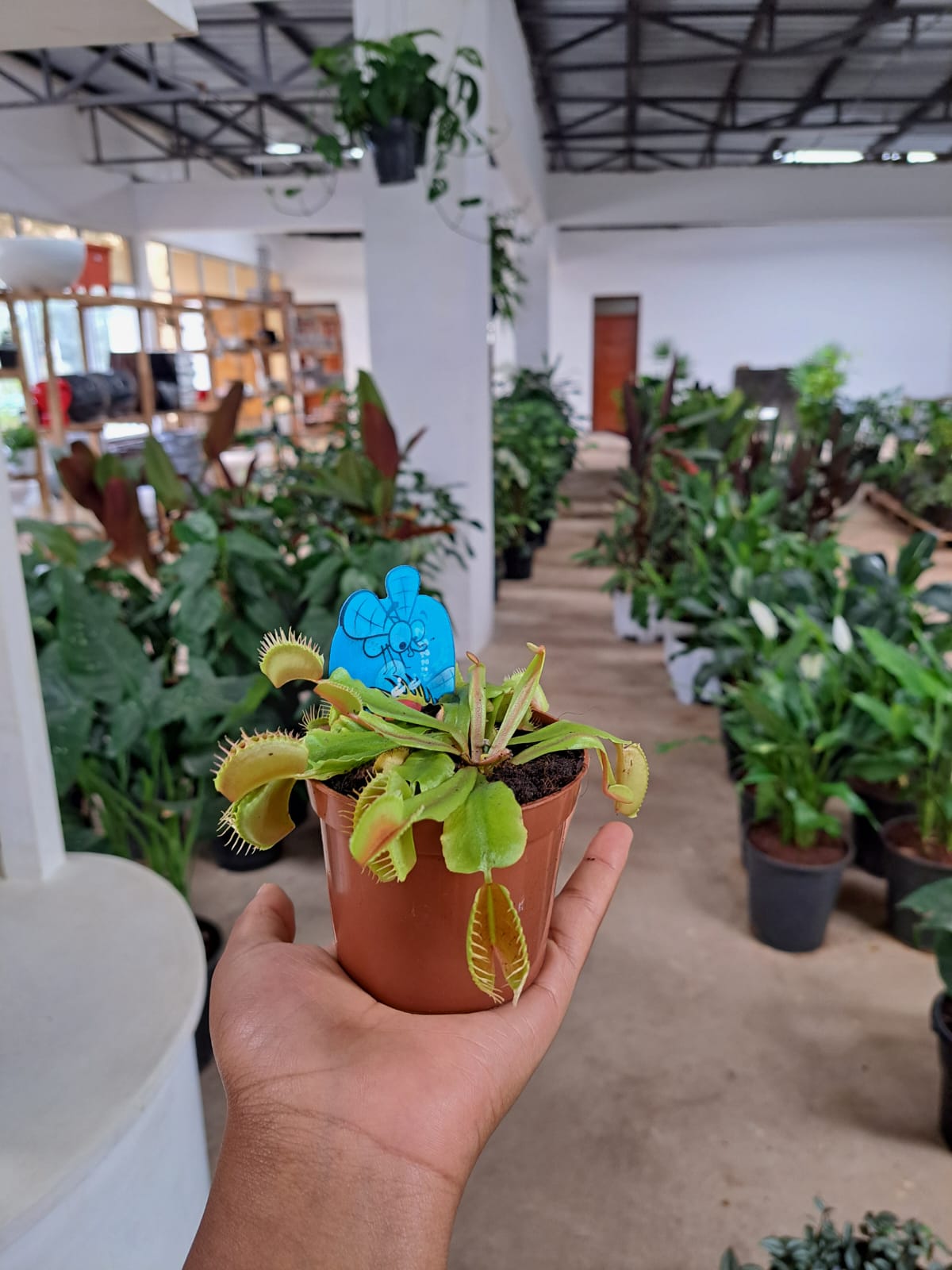Planty Kenya
Venus Fly Trap
Venus Fly Trap
Couldn't load pickup availability
Venus Fly Trap: The Carnivorous Marvel
The Venus fly trap (Dionaea muscipula) is a captivating and unique carnivorous plant that captures the imagination of plant enthusiasts worldwide. Known for its fascinating ability to trap and digest insects, this plant is a true marvel of nature. Native to the wetlands of the Southeastern United States, the Venus fly trap has distinctive "traps" that resemble a pair of jaws, lined with sensitive trigger hairs that snap shut when stimulated by prey.
Care Needs for Venus Fly Trap:
1. Light:
Venus fly traps thrive in bright, indirect sunlight. Place your plant near a sunny window where it can receive several hours of bright light each day. Avoid intense, direct sunlight, as it can scorch the leaves.
2. Water:
Keep the soil of your Venus fly trap consistently moist at all times. Use distilled water, rainwater, or water collected through a reverse osmosis system, as tap water with minerals can harm the plant. Water the plant with a tray method by placing the pot in a saucer of water and allowing the plant to absorb water from the bottom.
3. Soil:
Plant your Venus fly trap in a well-draining soil mix that is low in nutrients, such as a mixture of peat moss and perlite. Avoid using regular potting soil, as it can be too rich for this carnivorous plant.
4. Humidity:
Maintain a high level of humidity around your Venus fly trap to mimic its natural habitat. You can increase humidity by placing the plant on a tray of pebbles filled with water or using a humidifier in the room.
5. Feeding:
While Venus fly traps can catch their own prey, you can supplement their diet by feeding them small insects like flies or crickets. Only feed mature traps, and do not overfeed the plant, as this can lead to digestive issues.
6. Dormancy:
During the winter months, Venus fly traps require a period of dormancy to rest and conserve energy. Keep the plant in a cool location with reduced light and decrease watering. Trim back any dead leaves and resume regular care in the spring.
By following these care guidelines, you can enjoy the captivating beauty of the Venus fly trap and witness its unique carnivorous behavior up close. Remember, patience and attention to detail are key to successfully growing and caring for this extraordinary plant.
Share











